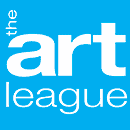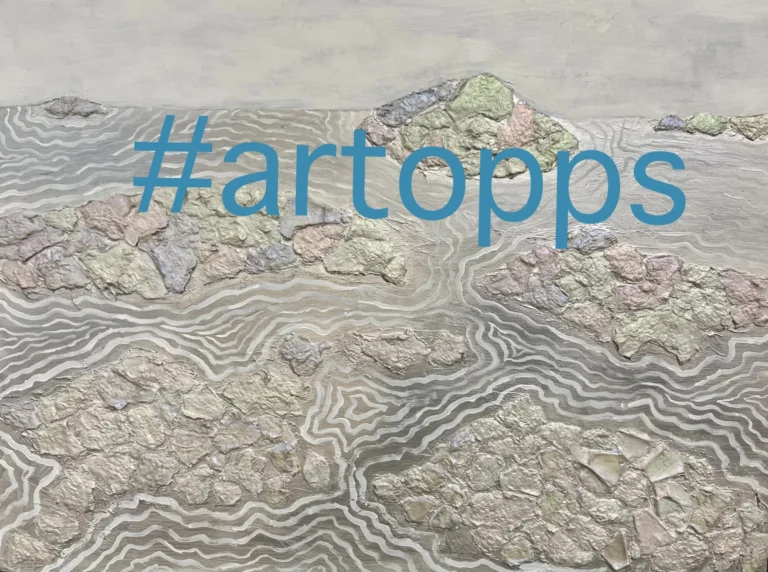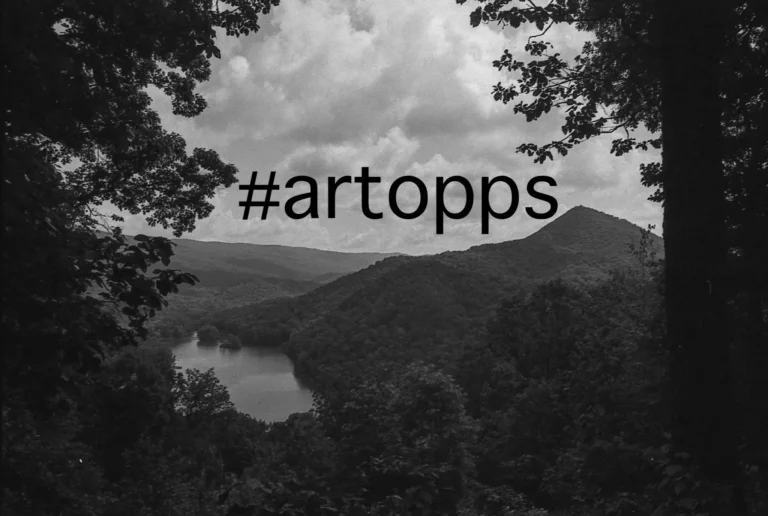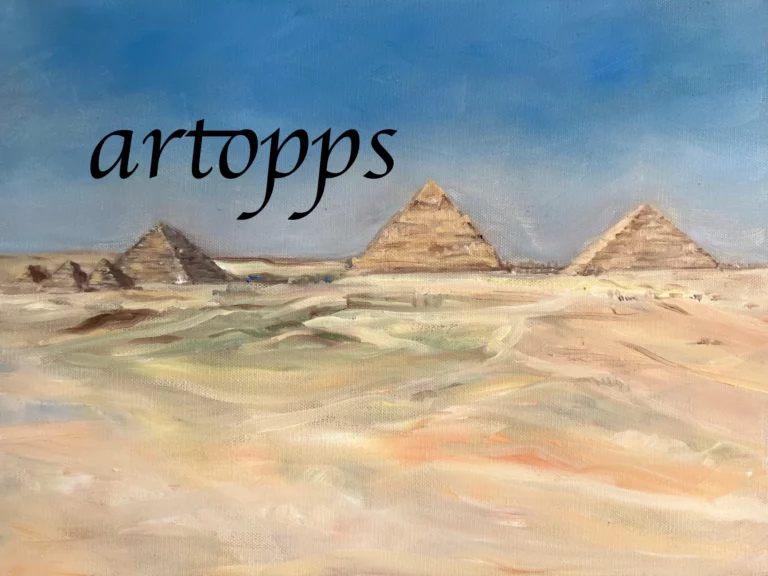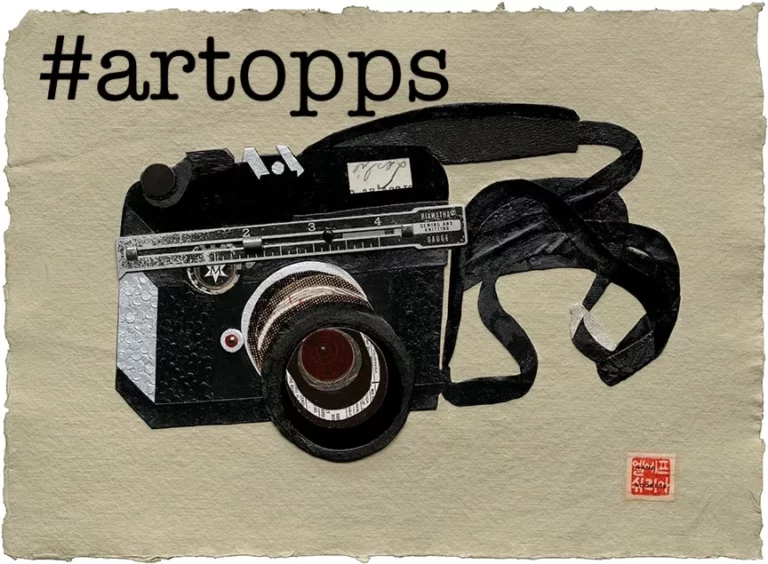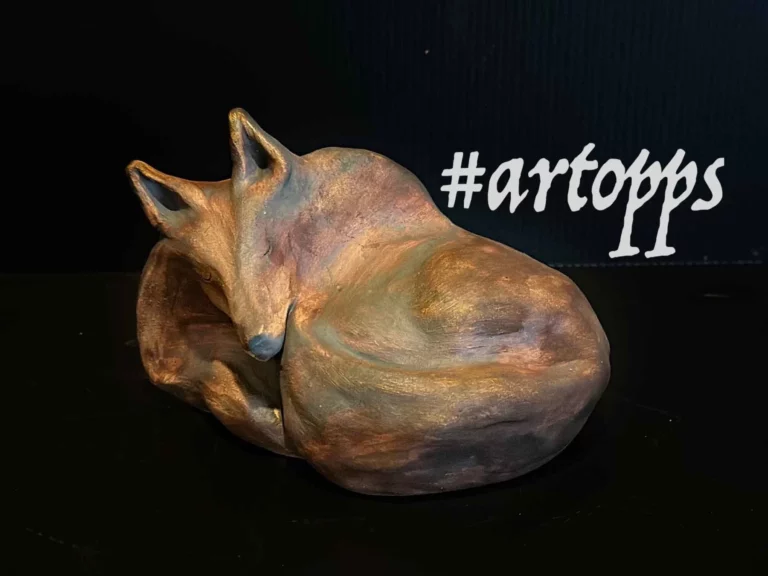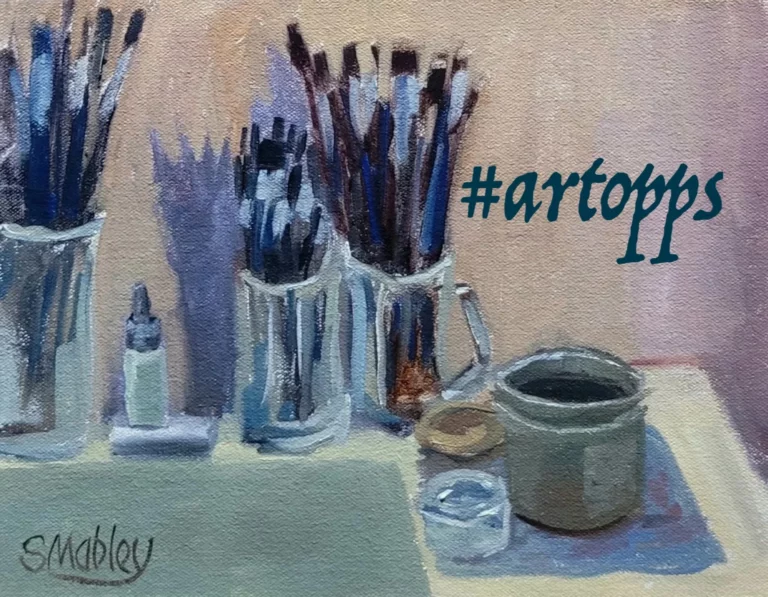Q&A with “Small Works” Award-Winner Everitt Clark
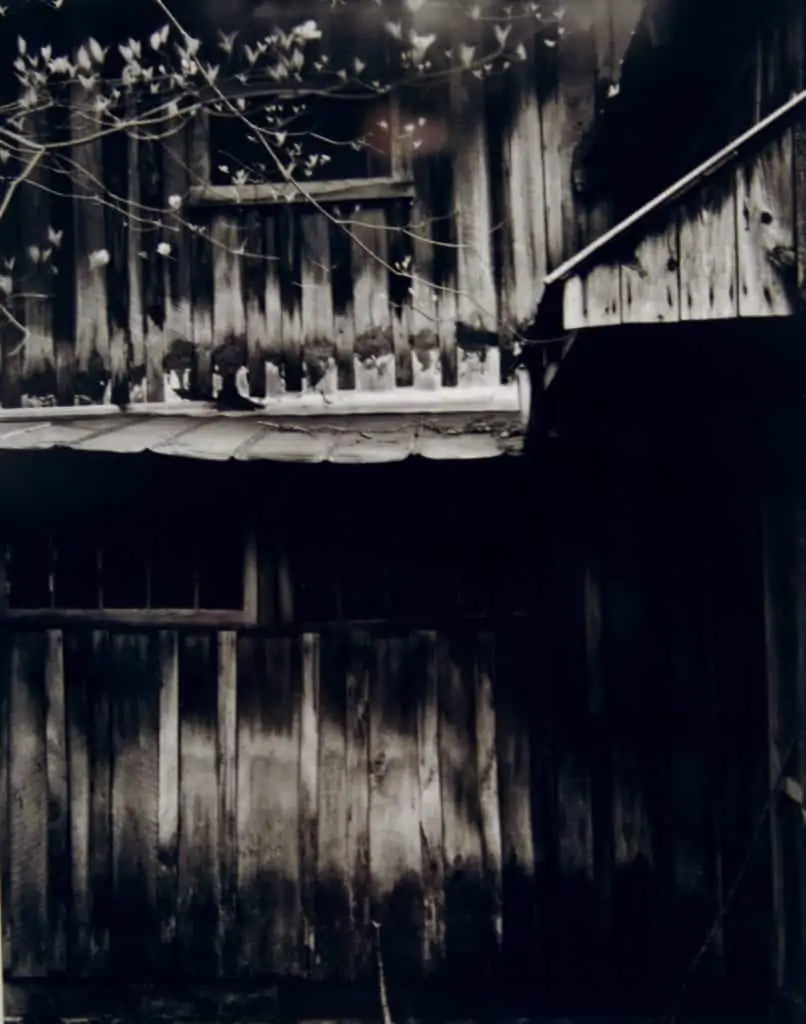
Last month’s “Small Works” exhibit has closed to make way for this month’s all-media show, but Everitt Clark’s silver gelatin contact print, Cabin 2, winner of the Eleanor Boudreau Jordan Award, lives forever on Flickr. We asked Everitt, who will have a solo show in The Art League Gallery in 2013, to tell us more about this photograph and his work in general. (Our Q&A with Theresa Esterlund, last month’s other award-winner, is here.)
When and where was the photograph taken?
Everitt: This photograph was taken in the spring of 2006 in the foothills of the Smoky Mountains, on the Tennessee side. I printed it in early 2007.
What was your inspiration or reason for creating Cabin 2?
The cabin in this image was one of many abandoned homes I came across in Great Smoky Mountains National Park. It was already beginning to return to a state of nature: the yard was overgrown, the wood warped and rotten, and the interior largely gutted. An approaching storm provided not only a breeze to stir the leaves, but my favorite kind of diffuse light, which brought out the delicate contrasts in the texture of the wood. The scene just had all the elements of a great photograph: a composition that composed itself, a seemingly banal but actually riveting subject, and that sense of a “decisive moment,” fleeting but indelible. I tried to do it justice.

Is it part of a series? If so, how did the series start, and how has it changed?
This picture is the second in a sequence of four cabin photographs — it’s the “slow movement” — and the sequence is part of a larger body of photographs I shot on a single two-week-long trip to the Smoky Mountains. I was painfully aware that I had never made a Landscape (with a capital “L”) of which I was proud; I was determined to remedy that situation. As it happened, I took a lot more pictures of decrepit buildings than I did of breathtaking vistas. I learned that I don’t have it in me to be like Ansel Adams. That’s not necessarily a bad thing (no disrespect to Ansel).
What would you like the viewer to come away with?
A sense that the sublime can be found in the humblest surroundings.
Nothing useless is, or low;
Each thing in its place is best;
And what seems but idle show
Strengthens and supports the rest. (Longfellow)
More from Everitt after the jump:
How is your medium an integral part of your work? Why do you work in the medium that you do? And why a silver gelatin print?
I use a 4″x5″ field camera, from which I make silver gelatin contact prints (i.e. traditional photographic prints that are the same size as the negative). It’s a relatively cumbersome way to make a photograph, compared to a point-and-shoot camera, but it offers certain advantages that I can’t bear to part with. For starters, I love the way a good silver gelatin contact print looks. Its tonal density and subtlety are unbeatable: enlargements and digital prints still can’t compare. Check out the National Gallery of Art’s wonderful Harry Callahan retrospective, which contains some of the master’s contact prints side-by-side with enlargements, if you want to see what I’m talking about.
I also like working with a camera that requires a tripod and a darkcloth, as my 4″x5″ does. It means that I have to put some genuine thought into each composition before I click the shutter.
How would you describe your artistic process?
I do most of my shooting, these days, within a few miles of my house in Del Ray. I usually walk or drive around the neighborhood until something catches my eye. It could be a an empty field, a wooded area, or just a patch of suburban sprawl. Once I’ve found a promising location, I wander around with my camera, looking at everything. I generally get better results if I let a subject find me than if I hunt for something in particular.
Once I have my shots, I develop and print them in my own darkroom, by myself. Each print is unique. I don’t usually make more than one or two prints from a given negative, since the kind of processing I do is fairly time- and labor-intensive. In addition to the standard darkroom processes of dodging and burning, I apply to each print a potassium ferricyanide-based reducer, or “bleach,” which dissolves silver and can be used to add highlights, bring out soft details, and finely adjust the balance of the image. After toning, washing, and mounting the print, I use watercolor and a razor blade to make any final adjustments.
What technical element is most important in your work? Color, composition, line, etc?
I guess I would say that tone and composition are of equal importance. I am always trying to achieve, in my prints, the quality which Rilke observed in Cezanne’s work: “it’s as if each part were aware of every other part.” I find that it’s hard for me to do that unless there is already some strong, striking structure in the negative.
Where do you see your work going next, or what are you working on now?
Right now I’m working on a series called “Close to Home,” which focuses on the interplay of natural and man-made objects in the suburbs of northern Virginia. I’ll be showing images from this body of work at The Art League in November 2013. I also plan to do more portraits, time and subject matter permitting.
Do you have other works in the gallery this month?
Funny story: I was supposed to have another photograph in this month’s show, but it was disqualified because the jurors discovered I’d submitted it previously. I didn’t know that a particular image can only ever be exhibited once. I guess I should read the fine print on things more closely!
Can't get enough?
Sign up for our weekly blog newsletter, subscribe to our RSS feed, or like us on Facebook for the latest Art League news. Visit our homepage for more information about our classes, exhibits, and events in Old Town Alexandria, Virginia.
